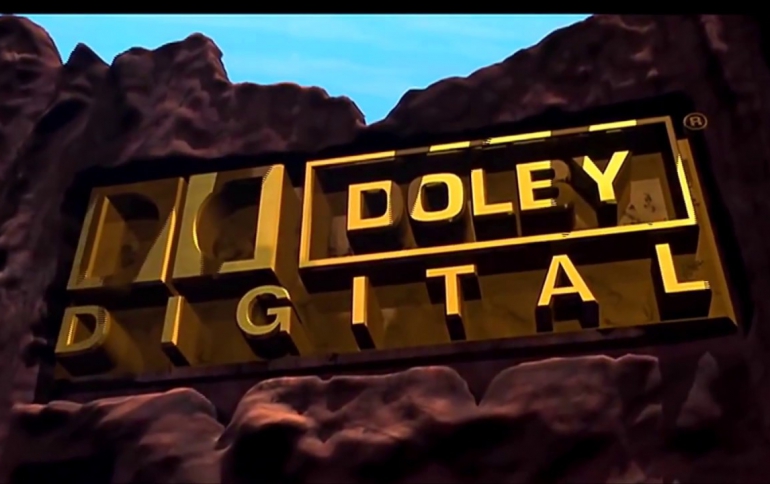
Dolby Develops Super TV
When most people think about Dolby, they think about high-quality sound. But the company has invested in a super-expensive, super-powerful, liquid-cooled TV that could display incredibly bright images.
The company brought people in to see the super TV and asked them how bright they liked it. 90 percent of the viewers in Dolby's study preferred a TV that went as bright as 20,000 nits. For thoe not familiar with the term, a nit is a measure of brightness. For reference, a 100-watt incandescent lightbulb puts out about 18,000 nits.
Although looking at a 100-watt bulb would hurt your eyes, real TV images are not pure-white. They include a mixture of dark and light. Only small parts of real-world scenes are very bright. And according to Dolby, one of the secrets to producing TV images that look like real life is having that mix of true brights and darks.
And viewers want images of as much 20,000 nits - 200 times brighter than today?s industry standard.
But according to Dolby, brightness is only part of the story. Contrast - the difference between light and dark areas of the picture - also plays a very important role. A viewer's eyes have an incredible ability to perceive contrast. Even if the whitest white on the part of the screen someone is viewing is as much as 10,000 times brighter than the darkest area (a difference known as the contrast ratio), most people will still be able to perceive both parts of the image without a problem.
But that doesn't mean that a 10,000:1 contrast ratio is all a display needs. The eyes adapts as it moves from brighter to darker areas. And that adaptation happens even as an eye is roaming around an image. That means that users can see a 10,000:1 contrast ratio in a bright area of the image, then look at a different part of the same image and see a 10,000:1 ratio in a dark area. When they combine all those ratios, they find that a high quality display should be capable of a contrast ratio of 100,000:1 or more.
Dolby says that if you raise both the brightness and the contrast of a TV display, something magical happens: images on the TV start to look like the real world.
Dolby has offered side-by-side demonstrations of a high-end HDTV and a prototype of a future brightness-enhanced set.
Dolby?s prototype included upgraded LED backlight to help produce up to 4,000 nits, and a decoder to help handle enhanced images.
And the results were impressive. Where the "before" images looked very good on the conventional HDTV, switching on the Dolby prototype made them look faded and lifeless.
Dolby has not yet put a name on the video technology. But the company says it has been showing it to TV manufacturers, service operators, studio executives and directors. It expects several hardware companies to demonstrate displays using the technology at the Consumer Electronics Show in January.
Although looking at a 100-watt bulb would hurt your eyes, real TV images are not pure-white. They include a mixture of dark and light. Only small parts of real-world scenes are very bright. And according to Dolby, one of the secrets to producing TV images that look like real life is having that mix of true brights and darks.
And viewers want images of as much 20,000 nits - 200 times brighter than today?s industry standard.
But according to Dolby, brightness is only part of the story. Contrast - the difference between light and dark areas of the picture - also plays a very important role. A viewer's eyes have an incredible ability to perceive contrast. Even if the whitest white on the part of the screen someone is viewing is as much as 10,000 times brighter than the darkest area (a difference known as the contrast ratio), most people will still be able to perceive both parts of the image without a problem.
But that doesn't mean that a 10,000:1 contrast ratio is all a display needs. The eyes adapts as it moves from brighter to darker areas. And that adaptation happens even as an eye is roaming around an image. That means that users can see a 10,000:1 contrast ratio in a bright area of the image, then look at a different part of the same image and see a 10,000:1 ratio in a dark area. When they combine all those ratios, they find that a high quality display should be capable of a contrast ratio of 100,000:1 or more.
Dolby says that if you raise both the brightness and the contrast of a TV display, something magical happens: images on the TV start to look like the real world.
Dolby has offered side-by-side demonstrations of a high-end HDTV and a prototype of a future brightness-enhanced set.
Dolby?s prototype included upgraded LED backlight to help produce up to 4,000 nits, and a decoder to help handle enhanced images.
And the results were impressive. Where the "before" images looked very good on the conventional HDTV, switching on the Dolby prototype made them look faded and lifeless.
Dolby has not yet put a name on the video technology. But the company says it has been showing it to TV manufacturers, service operators, studio executives and directors. It expects several hardware companies to demonstrate displays using the technology at the Consumer Electronics Show in January.





















